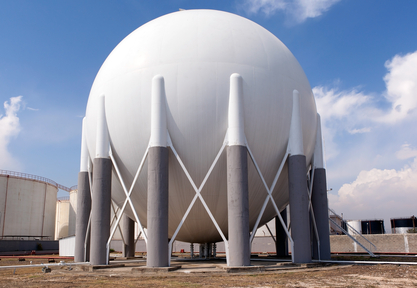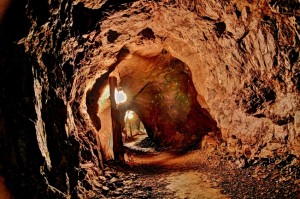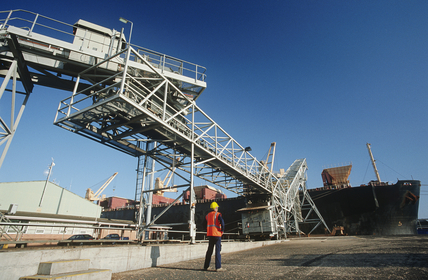Canadian Women in Oil and Gas Industry
 Canadian Women in Oil and Gas Industry
Canadian Women in Oil and Gas Industry
Women have traditionally been a minority in mining, especially in executive leadership positions. However, there has been a change in recent years as many mining companies are altering their attitudes towards women in the industry. Many studies have proven that women have certain superior qualities to men. Therefore, including women in any working group, results in better performance. As oil and gas companies have recognized the benefits of including women in the oil and gas industry’s work force, it has become one of the main reasons that the Canadian oil and gas industry has seen a spike in female recruitment.
Current Statistics of Positions Held by Women
The Canadian mining industry was among the first to include women in mining work. Women participating, in what was traditionally a male job, have been recognized in Canada for several decades now. Women began entering the male dominated industry with the modernization of mining equipment, which made mining easier and safer. Since then, many other industries have followed suit as it has become clear that women are capable of handling most jobs when offered the opportunity. Women are encouraged to take up jobs in both administrative and manual positions. Currently, women take up 19% of the positions in the mining industry, with 12% filling senior executive positions and 6% in board of director positions. Although the oil and gas mining industry still accounts for a smaller number of women, intensive efforts are being put in towards encouraging women to join the petroleum industry. The efforts have not gone unnoticed, with each of the four petroleum related programs doubling enrollment over a 10 year period.
Gender Dis-aggregated Enrollment in Petroleum-Related Programs University of Calgary
| Program | 1987 Enrollment | 1997 Enrollment |
| Chemical Engineering | Total: 123 Female: 20 (16.3%)Male: 103 (83.7%) | Total: 211 Female: 76 (36.0%)Male: 135 (64.0%) |
| Geology/Geophysics | Total: 183 Female: 40 (21.9%)Male: 143 (78.1%) | Total: 192 Female: 79 (41.1%)Male: 113 (58.9%) |
Source: NSERC/Petro-Canada Chair for Women in Science and Engineering, Department of Geo-metrics Engineering, University of Calgary University of Alberta
| Program | 1987 Enrollment | 1997 Enrollment |
| Chemical Engineering | Total: 123 Female: 20 (16.3%)Male: 103 (83.7%) | Total: 211 Female: 76 (36.0%)Male: 135 (64.0%) |
| Chemical Engineering | Total: 194 Female: 37 (19.1%)Male: 157 (80.9%) | Total: 270 Female: 95 (35.2%)Male: 175 (64.8%) |
| Geology | Total: 120 Female: 24 (20.0%)Male: 96 (80.0%) | Total: 117 Female: 41 (35.0%)Male: 76 (65.0%) |
| Geophysics | Total: 29 Female: 4 (13.8%)Male: 25 (86.2%) | Total: 20 Female: 9 (45.0%)Male: 11 (55.0%) |
Sources: Office of the Registrar, Institutional Analysis, University of Alberta. Faculty of Science, University of Alberta Reasons Behind the Increasing Demand for Female Workforces
Gone are the days when women were thought to only be good at housekeeping. There have been many studies that have proven that in regards to business, women are even more successful than men. It has been proven that males and females do thing in different ways; bringing out some important benefits, if harnessed in the correct manner. A study done in 2012, Leadership: Women Do it Better than Men by Jack Zenger and Joseph Folkman, clearly demonstrated that women excelled in 15 of the 16 characteristic required to be an excelling leader. This also means that work groups that have more women, tend to be more successful than those bearing fewer women. This is linked to certain skill sets which women tend to have, that are shown to be superior to men in planning and working. Below are some of these important aspects:
- Strategic planning : The Zenger and Folkman study clearly demonstrated that women tend to be better strategic planners then men. The study showed that men tend to want to continue trying a certain approach, even after falling twice or trice, with the hope of finding a solution. Women will return to the drawing board and attempt to determine what went wrong the first time round, which results in less time lost and more money saved.
- Risk management: Women also scored higher ratings when it came to risk assessment and management. The study did not go further to determine what made women better at taking more calculated risks, but hopefully future studies will determine the reason. Risk management decisions made by women tend to bear half the risk linked to decisions made by men.
- Openness to new ideas and approaches: Women are also much better at learning new skills that they are interested in. They showed an overall better willingness towards learning and developing new ideas and approaches linked to the projects at hand.
- Better at emotional management: Another very important skill that women tend to be superior at is emotional management. Unlike men, who get overwhelmed by anger or excitement, women tend to remain calm until the task is completed. This was clearly demonstrated in games held between the men and women, whereby the women retained focus on the competition at all stages. On the other hand, men came under pressure towards the end or when competition was intense, causing them to make major mistakes and even lose.
- Better financial acumen: Finally, comes money management. Most women tend to plan and spend limited financial resources in a better way than men. Women planned to spend the money with long term plans in mind, while men tended to observe the shorter term perspective, resulting in financial shortfalls over the long term.
Scope for a Female Workforce Improving the Canadian Oil Mining Industry The above are just a few of the skills that make women strong contenders for enrollment in the Canadian oil and gas industry. In February 2014, the female leadership program offered $250,000 in federal funding towards female scientists and engineers, as a way of attracting more women to take up petroleum and mining related programs in the future. The increasing influx of women getting involved in traditionally male dominated jobs is on the rise across all industries; with many observing major positive changes. It’s important that not only the Canadian oil and gas mining industry consider including more women, but all Canadian industrial sectors.









